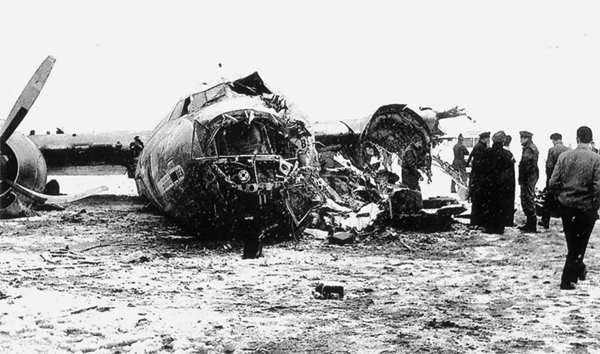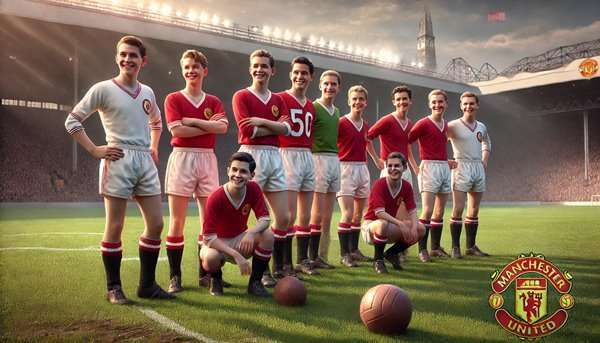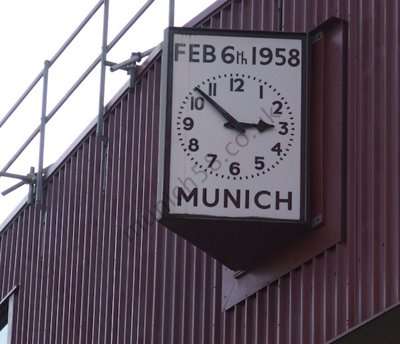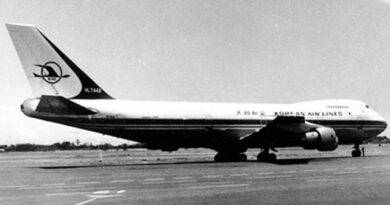Munich Air Disaster: The Tragic Event of February 6, 1958
The Munich Air Disaster remains one of the darkest days in the history of football. On February 6, 1958, a plane carrying Manchester United’s “Busby Babes” crashed, killing 23 people, including players, staff, and journalists. The event sent shockwaves through the sporting world and left a lasting legacy on the football community.
What Was the Munich Air Disaster?
The Munich Air Disaster involved a British European Airways flight, carrying Manchester United’s team, staff, and journalists, which crashed on takeoff from Munich-Riem Airport. The flight had stopped to refuel in Munich after departing from Belgrade, where the team had secured a spot in the European Cup semi-finals. Tragically, icy runway conditions caused the plane to crash on its third attempt to take off.
The Aircraft Involved: British European Airways Flight 609
The aircraft involved in the Munich Air Disaster was a British European Airways (BEA) Airspeed Ambassador 2, designated Flight 609. This twin-engine, propeller-driven plane was commonly used for short-haul European flights. Known for its spacious cabin and relative comfort, the Airspeed Ambassador was a reliable aircraft, but on the day of the crash, it faced severe weather challenges. With snow and slush accumulating on the runway, the plane struggled to reach the necessary speed for takeoff, leading to the tragic accident on its third attempt. Despite its reputation for safety, the adverse conditions that day proved fatal, highlighting the critical importance of weather-related safety measures in aviation.

image source
The Busby Babes: Manchester United’s Legendary Team
Manchester United’s squad at the time, known as the “Busby Babes,” was a young, talented group assembled by manager Sir Matt Busby. They were seen as the future of English football, known for their skill, teamwork, and promise. The team had captured the hearts of fans not only in England but across Europe.
The tragedy robbed the football world of these rising stars. Many of the players were in their early 20s, brimming with talent and potential.

Events Leading Up to the Crash
The team’s journey had started with high spirits. Manchester United had defeated Red Star Belgrade and advanced to the European Cup semi-finals. The plane was returning to Manchester, with a stopover in Munich for refueling.
After two unsuccessful attempts to take off, the pilot made a third try. This attempt ended in disaster. The icy slush on the runway reduced the plane’s speed, leading to a crash that claimed the lives of many onboard.
Casualties of the Munich Air Disaster
The crash led to the tragic loss of 23 lives. Among the casualties were:
- Eight Manchester United players: Roger Byrne, Eddie Colman, Mark Jones, David Pegg, Tommy Taylor, Liam Whelan, Geoff Bent, and Duncan Edwards (who passed away later from his injuries).
- Three Manchester United staff members: Including coach Bert Whalley and secretary Walter Crickmer.
- Eight journalists: Known sports journalists, including Tom Jackson and Frank Swift, who were traveling to report on the team’s journey.
- Two crew members and two other passengers.
Survivors and Their Legacy
Though many were lost, some survived the crash, including manager Sir Matt Busby and players Bobby Charlton and Bill Foulkes. These survivors went on to play crucial roles in rebuilding Manchester United and honoring the memory of their teammates. Sir Matt Busby, despite his injuries, returned to lead the club to European success. Bobby Charlton became one of the most iconic figures in English football.
The Aftermath of the Disaster
The Munich Air Disaster left a lasting impact on Manchester United and the football community. The club mourned the loss of their players, and fans across the globe felt the pain. Manchester United’s spirit of resilience came to the forefront. Determined to rebuild, they returned to the field with a mix of surviving players and new talent. Ten years later, in 1968, Manchester United won the European Cup, fulfilling the dream of the “Busby Babes.”
The Munich Memorials: Remembering the Lost
Every February 6, Manchester United and its fans observe a memorial to honor those who perished. A clock outside Old Trafford Stadium remains permanently, contrary to popular opinion, the clock is NOT fixed to show 3.04 (the time of the crash) (soure). The memorial serves as a tribute to the lives lost and as a reminder of the club’s commitment to honor their legacy.

Legacy of the Munich Air Disaster
The Munich Air Disaster was a pivotal moment in sports history. It united the football community in grief and showed the resilience of Manchester United. The club’s recovery and success following the tragedy is a testament to the enduring spirit of the Busby Babes.
The disaster taught valuable lessons in aviation safety, leading to improved protocols that ensure safer travel for athletes and the public alike. Today, Manchester United continues to carry the legacy of the Munich Air Disaster, commemorating the players, staff, and journalists who lost their lives on that tragic day.
Conclusion
The Munich Air Disaster on February 6, 1958, was a heartbreaking event that changed football history. Remembered annually, this tragedy stands as a reminder of the resilience, determination, and spirit of Manchester United. The Busby Babes’ legacy lives on, inspiring new generations to honor those lost and to celebrate their contributions to the beautiful game.


